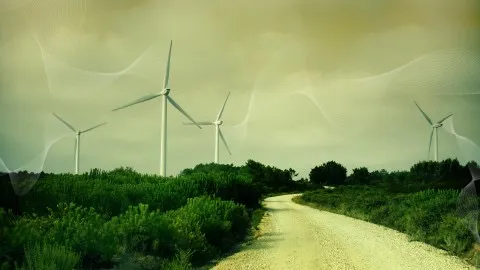
Wind turbine costs to rise by 10%
This is due to increased prices of steel, copper, aluminium, fibre, and logistics.
Wind turbine prices are likely to increase by up to 10% over the next 12 to 18 months due to increases in commodity prices, logistics costs, and coronavirus-related challenges, a new analysis from Wood Mackenzie pointed out.
As noted in a recent Wood Mackenzie report, a rise in steel, copper, aluminium, and fibre prices, coupled with a four-fold increase in logistics costs, have increased turbine prices over the last six months. Wood Mackenzie expects this trend to continue for the next four to five quarters.
Wood Mackenzie Principal Analyst Shashi Barla said that “turbine OEMs and component suppliers face a double whammy of cost increases and demand softening over the coming two years due to the US PTC (Production Tax Credit) and China feed-in-tariff (FiT) phase-outs. Despite this rise in costs, we expect turbine prices to return to normal levels by the end of 2022.”
Due to the US-China trade tussle not showing any signs of improvement, turbine OEMs are facing further cost pressures. This has forced the likes of Vestas, SGRE, and Nordex to explore alternative supply hubs, such as India.
Barla further shared that the "India for India" and "India for Global" supply chain strategies are encouraging leading turbine component suppliers to follow their turbine OEM customers into the Asia-Pacific nation.
“As expected, demand increases in India have failed to materialise, therefore allowing OEMs and suppliers to leverage excess production capacity to serve export markets cost-effectively. As OEMs continue to manufacture the latest generation turbines in India, component suppliers are expanding within the market to produce components closer to their clients’ nacelle factories.”
The analysis further shows that as market conditions continue to evolve, OEMs and turbine suppliers must adopt next-generation technologies and materials because supply chain bottlenecks for important materials will emerge over the next four to five years.
“If the capacity of critical capital components and raw materials does not expand over the next two years, the wind turbine industry will encounter supply constraints that could pose issues for country-level decarbonisation targets.
“Offshore nacelle capacity, carbon fibres, pultrusions, permanent magnet generators, large diameter main shaft bearings, gearbox bearings, semi-conductors, and specialised castings are at risk of future shortages.” Barla states.








![Cross Domain [Manu + SBR + ABF + ABR + FMCG + HBR + ]](https://cmg-qa.s3.ap-southeast-1.amazonaws.com/s3fs-public/styles/exclusive_featured_article/public/2025-01/earth-3537401_1920_4.jpg.webp?itok=WaRpTJwE)
![Cross Domain [SBR + ABR]](https://cmg-qa.s3.ap-southeast-1.amazonaws.com/s3fs-public/styles/exclusive_featured_article/public/2025-01/pexels-jahoo-867092-2_1.jpg.webp?itok=o7MUL1oO)









 Advertise
Advertise


